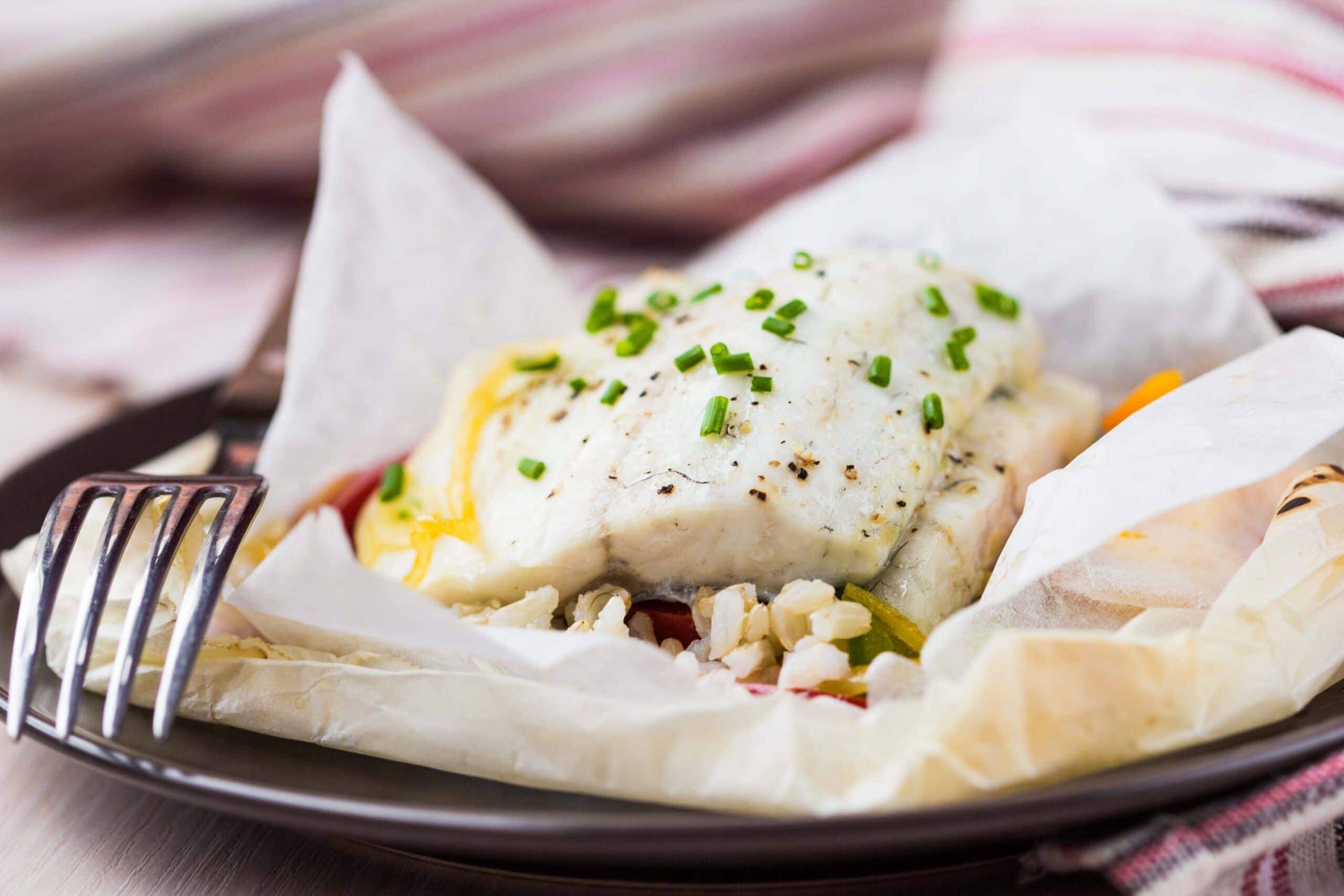If you thought baking fish was dull, wait until you try this amazingly delicious baked white fish recipe that will blow your mind! After only one bite, you’ll become a believer. The good news is that you can bake almost any white fish with lemon, garlic, and a standard mixture of tomatoes, onions, and olives.
With a zesty zap from the lemon and soft vegetables to flavor each bite, it comes out wonderfully fork-tender. It works as a quick weekday meal and for dinner gatherings, so the moment we tried it, we knew it was going into our regular rotation!
This baked fish recipe uses a simple Mediterranean technique to produce a dish with intense aromas! Before baking, the veggies are easy to slice, and the finished dish seems like much more than the sum of its parts.
This recipe’s brilliance is that the fish bakes on top of the Mediterranean-style vegetables, adding just the right amount of moisture to the dish. The vegetables are then blended to form a tangy sauce that adds a blast of zingy flavor to each bite.
We also add some dill to this dish. Dill is a great herb to pair with fish. This feathery herb has a mild flavor that complements the flavor of this mouth-watering baked fish recipe.
Eating Fish May Be Effective in Combating Gout Flares
Eating fish has been demonstrated to alleviate gout symptoms. This is because fish is high in omega-3 fatty acids, which have anti-inflammatory qualities and may help alleviate gout-related joint discomfort and inflammation.
Omega-3 fatty acids may also help reduce uric acid production, lowering the incidence of gout flare-ups. Omega-3 fatty acids are already well-known for their alleged capacity to enhance cardiovascular health and lower the risk of heart attack and stroke.
It’s no wonder then that The American Heart Association advises consuming two servings of fish every week for this reason.
Fish is an excellent source of protein and is a strong source of omega-3 fatty acids. Those with gout may benefit significantly from eating fish as a source of protein. This is due to the fact that it lacks the large concentrations of purines that are present in red meat and other animal proteins.
Purines are converted by the body into uric acid, thus consuming fewer foods high in purines may help reduce the risk of gout flare-ups.
Not All Fish Are Gout-Friendly
In general, adding fish to a diet that is suitable for persons with gout may be a wise choice for those who want to lower their risk of flare-ups. It’s crucial to remember, though, that not all fish are made equal.
Fish with a high purine content, such as anchovies, sardines, and herring, may actually make gout flare-ups more likely. The ideal kinds of fish to include in a gout-friendly diet should be discussed with a medical professional or a trained dietitian.
Tips for Choosing the Best White Fish
There are a few criteria to consider when selecting the best white fish:
- Freshness makes all the difference: Look for sturdy, glossy fish with a light aroma. It is recommended to avoid fish that seems or smells off.
- Promotes sustainability: When choosing fish, look for fish that has been captured or raised in a way that has not harmed the ecosystem or diminished fish populations.
- Choose the right texture: White fish come in a variety of textures. Others are denser while others are flaky. Choose a fish based on your preferred level of firmness.
- Best flavor: White fish can have either a faint or strong flavor. Look for fish with a milder flavor, such as cod or halibut. If you prefer a stronger flavor, consider haddock or tilapia.
- Plan and prepare accordingly: Consider how you intend to prepare the fish. Certain types of white fish are more suited to specific cooking methods than others. Some fish, for example, may be better grilled or broiled than others, which may be baked or sautéed.
List of Ingredients
- 5 lbs. of white fish fillets (tilapia, halibut, cod, snapper, and so forth).
- A pint of halved cherry tomatoes.
- ¼ cup halved green olives (optional*; we prefer Castelvetrano).
- ¼ cup of thinly sliced red onion.
- 3 minced garlic cloves.
- 2 teaspoons of drained capers.
- Two tablespoons of freshly chopped parsley, divided.
- 2 tablespoons split of olive oil.
- 1 teaspoon kosher salt, divided.
- Ground black pepper, freshly ground.
- 1 tablespoon dried oregano.
- Lemon juice, 2 tablespoons.
- 1 to 2 teaspoons dried dill.
Step-By-Step Instructions
- Set the oven’s temperature to 425 degrees. When preparing the vegetables, leave the fish at room temperature.
- Combine halved cherry tomatoes (approximately 8 ounces), chopped olives, and minced red onion in a mixing dish. Add extra thyme, oregano, and garlic, as well as a pinch of kosher salt and black pepper. Toss with a little extra virgin olive oil to mix.
- Dry off the fish by patting it. Divided between the filets, rub it with one tablespoon of olive oil and one-fourth teaspoon of kosher salt. Add some oregano and some freshly ground black pepper to both. Then, season each piece of fish with salt, pepper, and dill, then sprinkle with lemon juice. Put the fillets on top of the vegetables in the pan.
- Bake for 20 to 25 minutes (depending on the thickness of the fish; check at 15 minutes for extremely thin fillets), or until the fish is flaky and the internal temperature is 140 degrees Fahrenheit when checked with a food thermometer.Serve immediately, garnished with the remaining 1 tablespoon of minced parsley, dill, and a few spoonfuls of vegetables on each plate (over the top or next to the fish).
Knowing When Baked Fish Is Ready to Eat
Cooking time for fish is quick. Whether you’re baking salmon, baked cod, or halibut, it’s critical to remove the fish from the oven at the proper temperature so it doesn’t overcook and get too dry.
Bake white fish at 425 degrees F for approximately 15 minutes. Start checking early because this will change depending on the thickness of the fish.
What did you think of our most recent recipe? Tell us in the comments section below!

